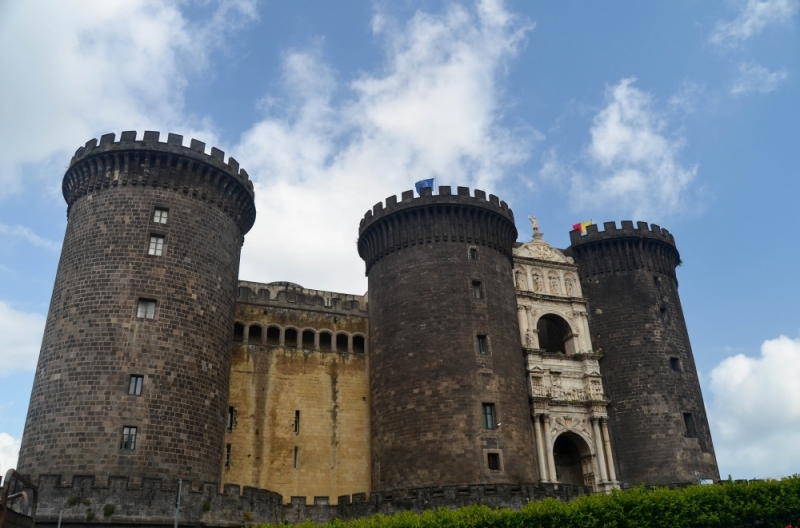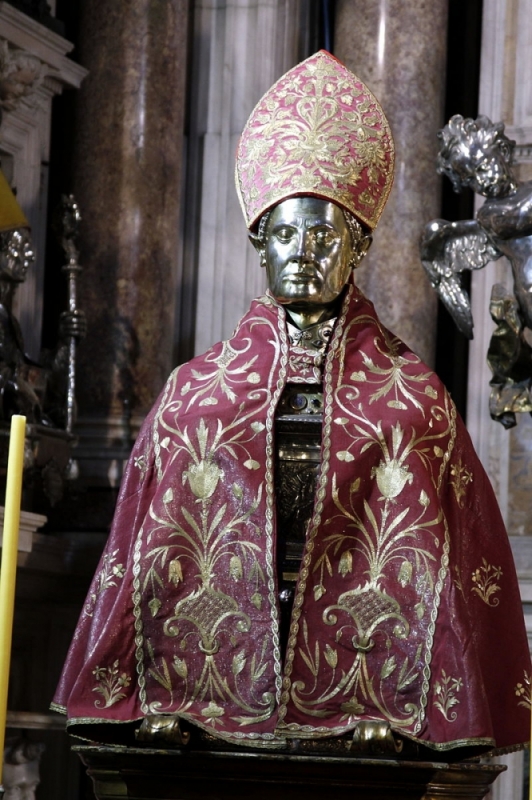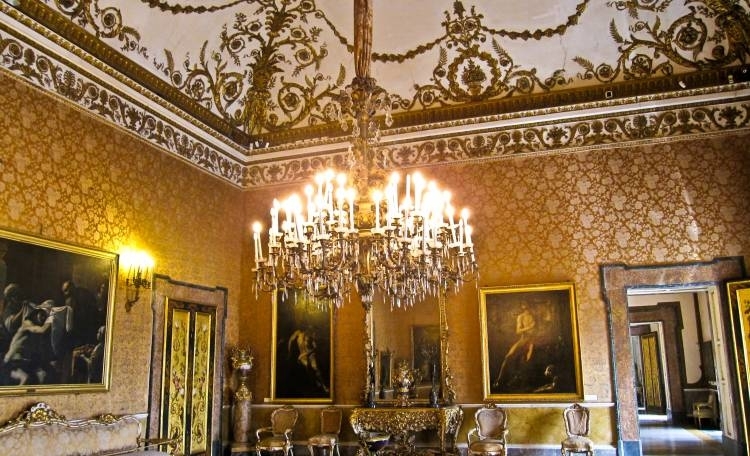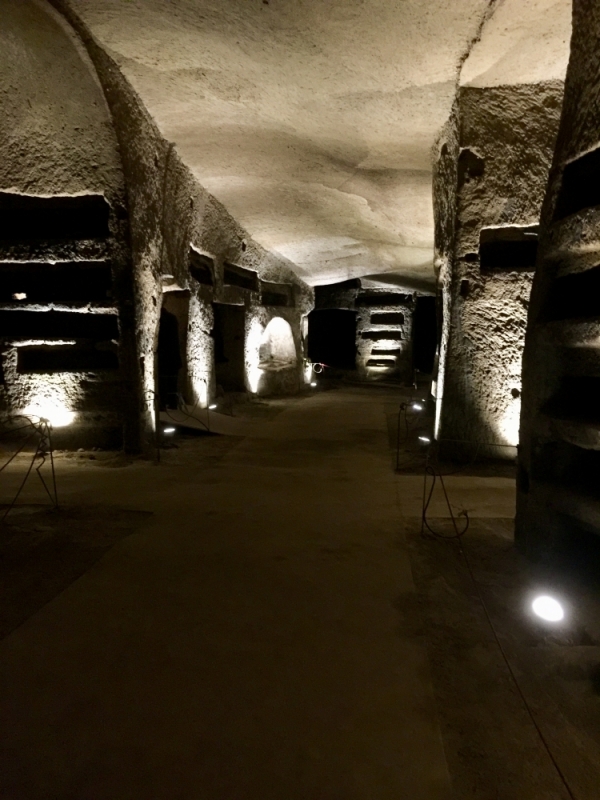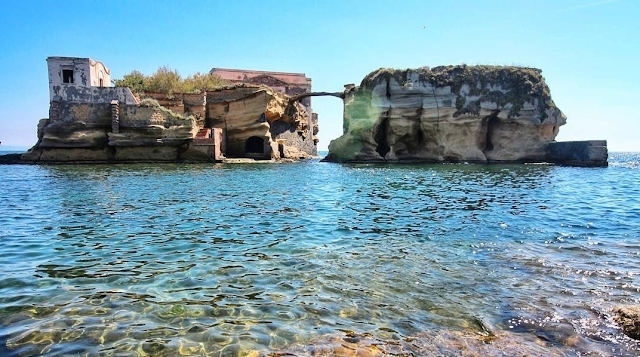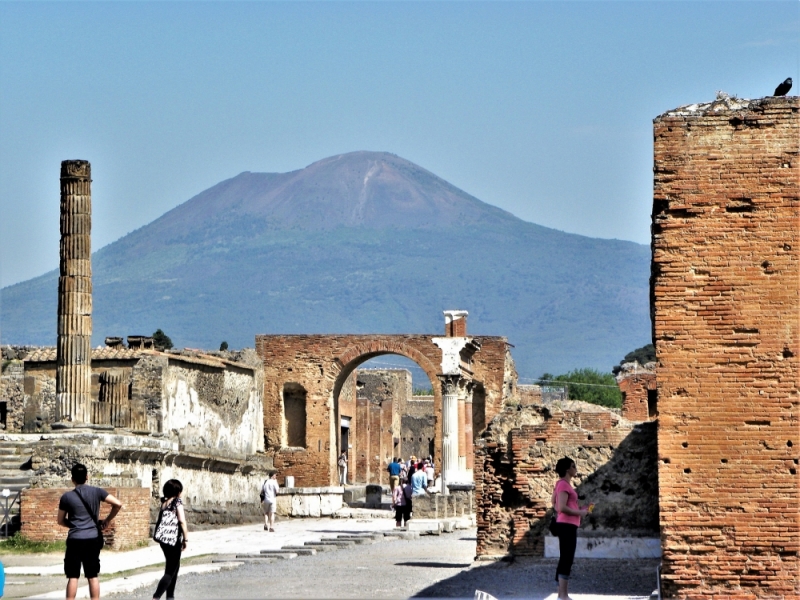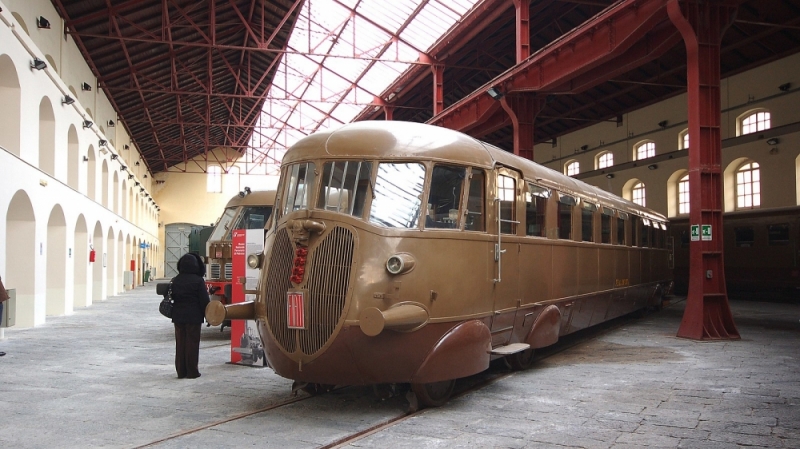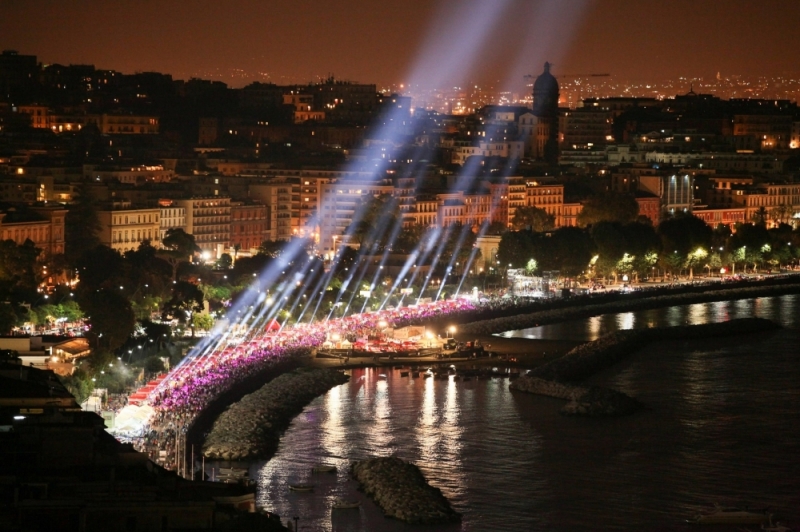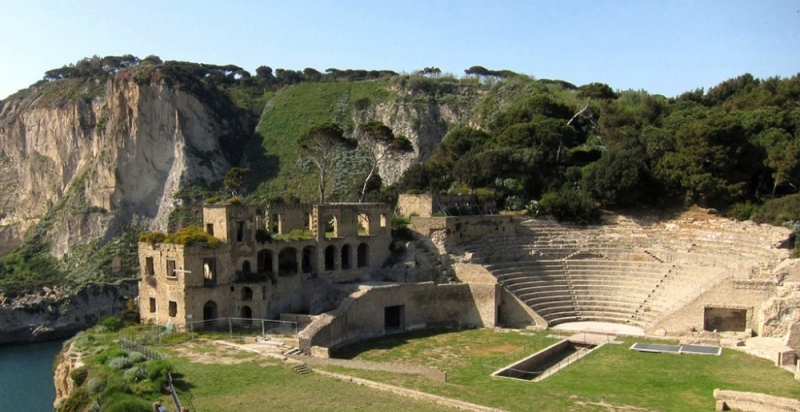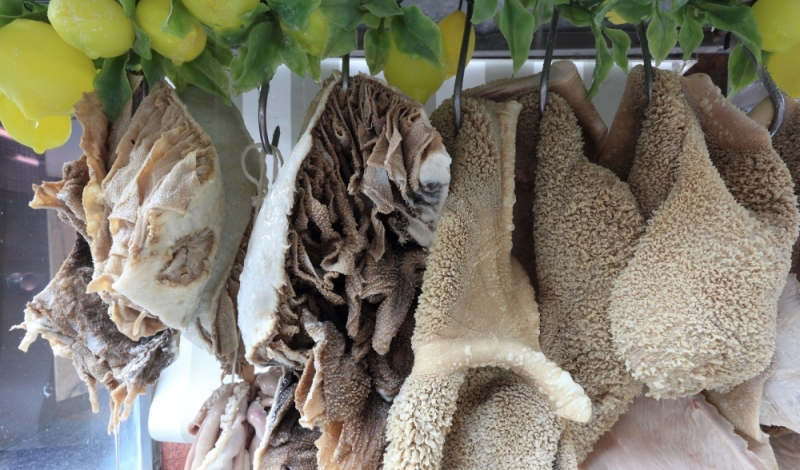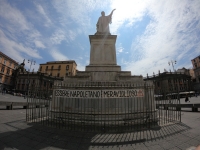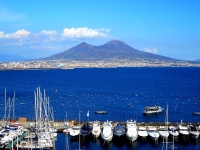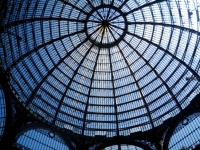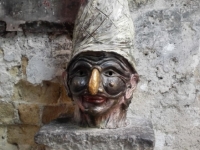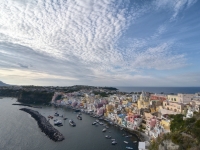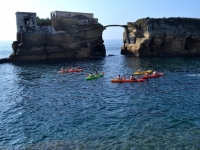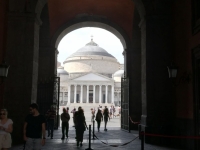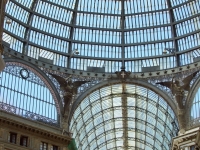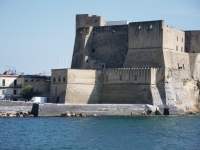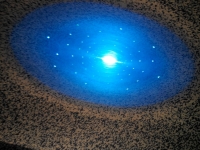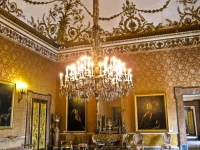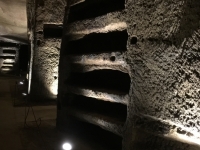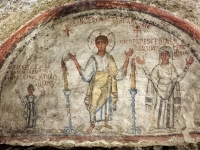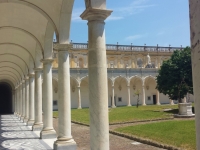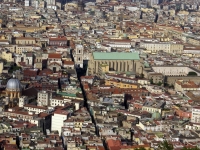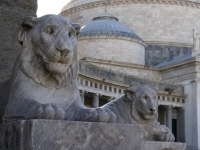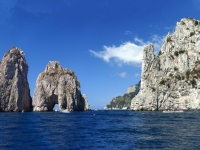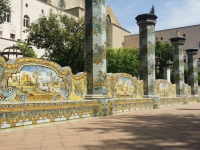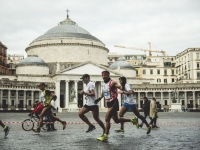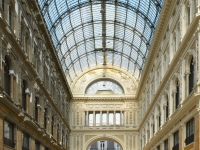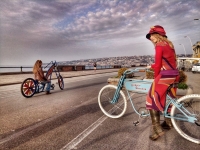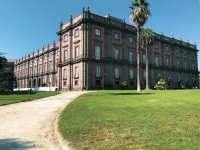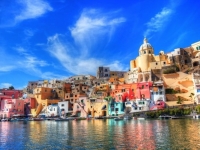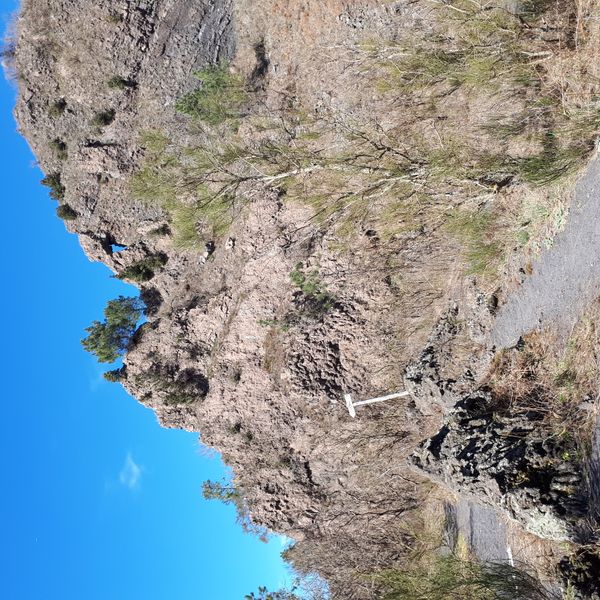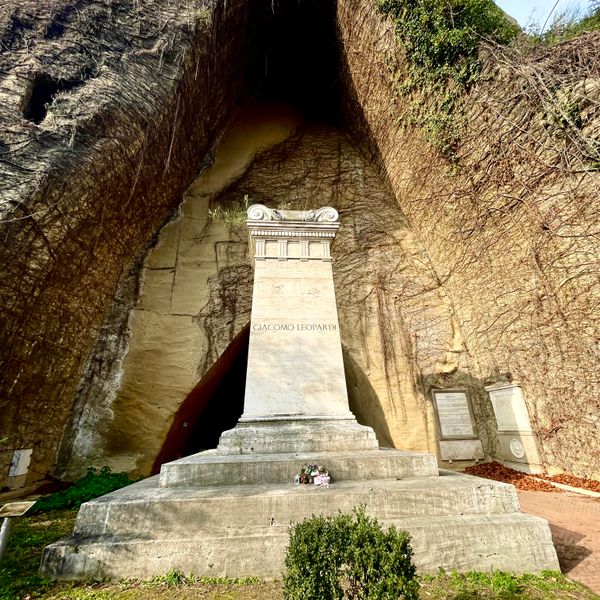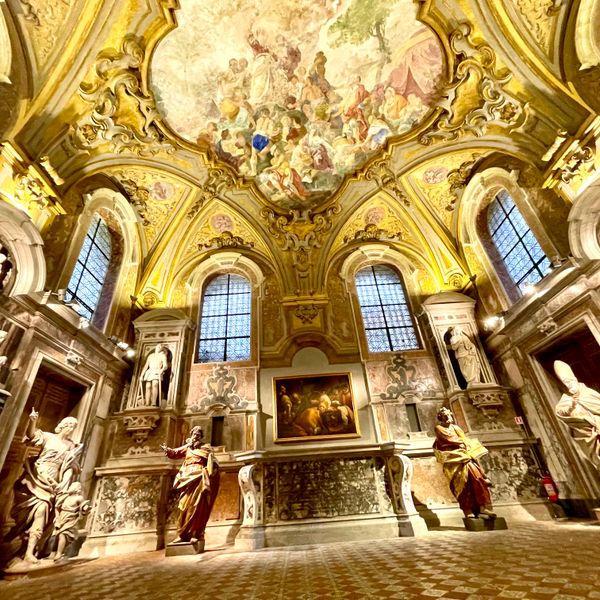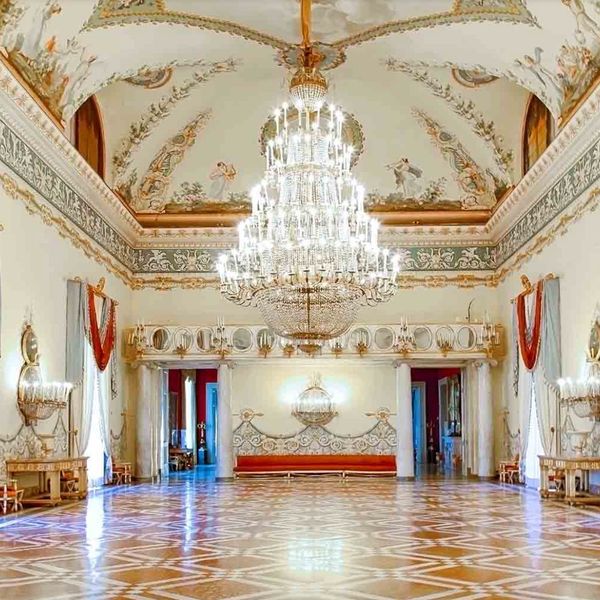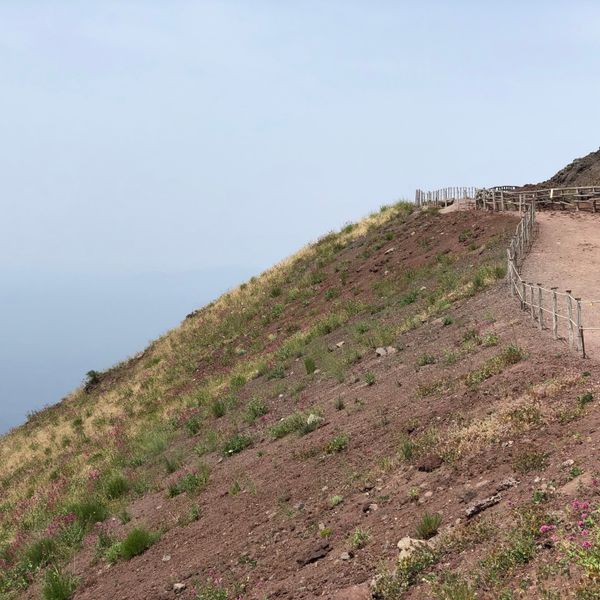the origins of Partenope
Naples is a city that lives on contradictions, which sinks its rich history in contradictions. Those contradictions that many have tried to tell over the centuries, see Stendhal, Goethe, Di Giacomo, De Crescenzo, just to name a few, but which above all lives suspended between history, myths and legends. It seems that Naples was founded by the Cumans of the city of Cuma, belonging to Magna Graecia and who gave it the name of Parthenope. But legend has it, however, that it was the mermaid goddess Parthenope who founded it, who, having died on the islet of Megaride, where the Castel dell'Ovo is today, dissolved and transformed into what is now the city, with the head nestled on today's Capodimonte and its feet, instead, on the Posillipo hill. It was then the Greeks who called it Neapolis, New City, once it had incorporated the first settlements of Magna Graecia, replacing Cuma as the largest port in the Mediterranean.
Subsequently, Naples was conquered by the Romans and became a cultural center and a great maritime power. Horace and Virgil were trained here and the most important Roman patrician families moved there, giving rise to very important new centers such as Pompeii and Herculaneum, which were then destroyed by the eruption of Vesuvius in 79 AD
After the fall of the Western Roman Empire, Naples first passed to the Byzantines and subsequently became an autonomous Duchy which however always had to counter the attempted invasions of the Lombards, first and of the Saracens, then.
After the year 1000, Naples was conquered by the Normans and with Frederick II it became the most important center of the Kingdom of Sicily, so much so that it was here that he decided to establish the oldest University in Southern Italy, which bears his name.
After the Norman period, Naples was then dominated by the Angioni, who made it the capital of the Kingdom of Naples and during the reign of Robert of Anjou, Naples became the most important cultural center of southern Italy, so much so that it hosted Petrarch, Boccaccio and Giotto.
Then followed the Aragonese domination, to then pass, in 1503, under the Spanish domination which left many traces in the Neapolitan dialect and also in the urban planning of the city.
There have been many dominations in Naples and each one has left something in this city, making it unique. Just think of the Quartieri Spagnoli, the Maschio Angioino or the Castel dell'Ovo, or the Church of Carmine in Piazza Mercato (the bell tower is inspired by an Arab Minaret) which, despite being monuments, are actually books that tell the story of this modern, cosmopolitan city, still strongly linked to its past and its traditions. A city that does not disdain progress, but which still relies on San Gennaro and the miracle of the liquefaction of his blood, as a good omen for Naples and the Neapolitans.
What see
There would be an endless list of things to see in Naples, as it can be called a real open-air museum.
We propose to you those that are the crucial monuments, those that you cannot absolutely miss, without which you cannot say that you have really been in Naples:
Via SpaccaNapoli
1) If you arrive in Naples you cannot not stay in the historic center that culminates in via SPACCANAPOLI , the street that splits the city exactly in two. Walking the 2 km from the Spanish Quarters to Forcella, you will find yourself immersed in the liveliness and folklore of the Neapolitans who live in this area, surrounded by historic buildings and ancient churches, with the scent of babà and sfogliatella that tickles your sense of smell. Along Spaccanapoli you will also find the corner that overlooks San Gregorio Armeno , the famous street of the shepherds, where throughout the year you can breathe the Christmas air as there are the shops where the masters work to create the cribs, with cork and terracotta shepherds. A curiosity: among the "classic" shepherds you will notice infiltrators: they are the well-known faces of the moment, those that between the rose and particular deeds are noticed by the media to the point of being celebrated by the Neapolitans with a statuette.
Piazza San Domenico Maggiore
2) Going along Spaccanapoli, you arrive at Piazza San Domenico Maggiore , where there is the church of San Domenico Maggiore and behind you, along the homonymous alley, you will arrive at Cappella San Severo , where the Veiled Christ is kept. The sculpture by Giuseppe Sanmartino, famous for the marble veil that covers the body of the Christ, lying perfectly like a veil of fabric.
It seems that among the greatest admirers of the Veiled Christ, there was Antonio Canova, who would have given ten years of his life just to have been he who sculpted this incomparable work of art.
3) Staying in the Spaccanapoli area, visit the beautiful baroque church of Gesù Nuovo , in the square of the same name. Inside are the remains of San Giuseppe Moscati, a Neapolitan doctor who became a saint in 1987. Nearby, there is also the Basilica of Santa Chiara. It is the largest Gothic basilica in the city, with the adjoining monumental cloister , decorated with yellow majolica that symbolize the brightness of Naples and the Neapolitans.
Naples Cathedral
4) If we talk about Naples, we talk about superstition and no one is more superstitious than a Neapolitan, on September 19, the day of San Gennaro . San Gennaro is the patron saint of Naples and on September 19 "ago or 'miracle", that is, the liquefaction of his blood takes place, kept in the Cathedral of Naples , together with the famous Treasure of San Gennaro. The Duomo and the Treasury museum are located in Via Duomo and can be visited. In the museum of the Treasure it is also possible to see the miter of San Gennaro, a bishop's headgear unique in its kind, in which diamonds, rubies and emeralds are set.
Royal Palace of Naples
6) The Royal Palace of Naples hosted first the Spanish viceroys, then the Bourbons and, finally, the Savoys. Today it is a museum of which it is possible to visit the apartments and is also the seat of the National Library. Piazza del Plebiscito is undoubtedly the most famous square in the city, a central point for all the Neapolitans. The square is home to the Basilica of San Francesco da Paola which, in its 25,000 square meters, borders the square with its colonnade in classical style.
7) The San Carlo Theater is the oldest theater in Europe and was inaugurated by Charles of Bourbon in 1737. It hosted the most famous musicians of the past and present.
Naples underground
8) Among the "museums" that you can visit, surely you cannot miss NAPLES UNDERGROUND . It is a network of tunnels, tunnels, narrow spaces that tell 2000 years of Neapolitan history, since the Greeks were the first to dig tunnels to extract the tuff from the Neapolitan subsoil. The underground Naples tunnels were used by the Neapolitans even during the world wars, as air-raid shelters. There are many entrances to access. At Piazza San Gaetano (Tribunali area) you will find the entrance to the real NAPOLI SOTTERRANEA, otherwise there is Via Morelli, the entrance to the GALLERIA BORBONICA, an underground tunnel built by King Ferdinand II, as an escape route to the sea, in case of riots.
9) If you like the idea of visiting the subsoil of Naples, you should also visit the CATACOMBE of San Gennaro , an ancient cemetery area and are the most important Christian Monument of Naples.
The catacombs owe their name to the fact that around 400 AD they became the place where the remains of San Gennaro were moved. Thus the catacombs became an important place of worship for the Neapolitans.
The catacombs are located exactly in the basement of the Sanità district, in a neighborhood famous for crime. But the work of the young people of the neighborhood, together with the parish priests of the district, has made it possible to redevelop the catacombs, which today are visited by over 130,000 people a year.
waterfront Caracciolo
10) In Naples, you should not miss a walk on the Caracciolo promenade , one of the most famous walks in the world. From here you can admire the Castel dell'Ovo in the foreground and the Vesuvius that opens up as if embracing the Gulf of Naples and stretches out towards the Sorrento peninsula, of which we see Monte Faito and finally, far from the mainland, you can see Capri, the blue island, which stands right in the middle of the Gulf. If you have a few days, you can take advantage of our tours to visit Sorrento, Capri and the Amalfi Coast.
If you prefer to stay in the city, we recommend a visit and, why not, a swim in the Parco Sommerso della Gaiola, a protected nature reserve that is located in front of the Posillipo coast.
Pompei
11) Finally, once in Naples you must also visit Pompeii . The excavations of Pompeii and Herculaneum are the greatest testimony of what Roman life was like before the eruption of Vesuvius in 79 AD destroyed cities forever. The testimonies of Pompeii and Herculaneum came to us thanks to the excavations wanted by Charles III of Bourbon. If you can't get to Pompeii, as it is too far away, you can always see the finds recovered during the excavations, visiting the MANN, the Archaeological Museum of Naples, one of the most important museums in the world, for the quantity and quality of works it houses .
12) Herculaneum , along with Pompeii, was one of the most prosperous towns in the Roman Empire. It too was buried by waves of volcanic mud following the eruption of Vesuvius in 79 AD Today, the excavations of Herculaneum, together with those of Pompeii and Oplontis (the current Torre Annuziata), are part of the UNESCO World Heritage Site .
The road that leads to the cone of Vesuvius starts from Ercolano, to visit the crater.
other to see
As we said, Naples is an open-air museum and, in addition to the recommended points, which are those that absolutely cannot be missed, there are plenty of other places to visit. Some, like the Pharmacy of the Incurables or the Royal Palace of Portici , are not always open to the public, so we advise you to check the site or contact us if you want to visit them and we will update you on the dates and opening times ... who knows , you could be lucky! If you are not, however, do not give up, there is still to see the Museum of Capodimonte , which is located in the Reggia di Capodimonte, surrounded by a wonderful forest where on summer evenings many musical events are also organized; or there are the Filangieri museum , the PAN (Palazzo delle arti Napoli) with its exhibitions (currently there is the one on Juan Mirò, the last ones were those on Andy Warhol and Escher). Or you could get on a historic train at the Pietrarsa Museum , the museum of the first Italian railway, inaugurated in 1839 and connected Naples to Portici.
Movida and entertainment
If, during your visit, you wanted to go outside the box, you could climb up and get to the Vomero hill, one of the most beautiful districts of Naples, with its Art Nouveau buildings and the Certosa di San Martino or Castel Sant'Elmo , from which you will have Naples at your feet.
Il Vomero is also the shopping district; in Via Luca Giordano and in Via Scarlatti you can find historic boutiques and shops of the most important franchises. If you want to relax, why not do it with a walk in Posillipo. Walking along the panoramic Via Posillipo, you will arrive at Palazzo Donn'Anna, one of the most famous monumental palaces in Naples, famous for its many legends.
Instead, you could take a walk in the countryside, visiting the Real Orto Botanico di Napoli, in Via Foria, where you will find over 25,000 thousand specimens of about 9,000 different species of plants and vegetables. Like Palermo, colorful and not to be missed are the local markets of Naples. The most famous is that of the "Pigna Secca" (behind via Toledo), where you will find colorful fruit stalls, fresh fish stalls, clothing and much more, but also and above all so much Street Food. Other markets are no less important are those of Vomero (Antignano and Via Tino da Camaino), those of Porta Nolana (very famous at Christmas for fish) and that of Piazza del Carmine (specialized in toys is invaded on the night of the Befana). You can't miss a Spritz in the many street bars of the Spanish Quarter. If you want to experience Naples by night, we definitely recommend Via Partenope, with its bars and restaurants by the sea, or, Borgo Marinari, on the islet of Megaride, near the Castel dell'Ovo. Another of the more lively night districts is undoubtedly Chiaia. Its Piazza San Pasquale or the Vicoletto Belledonne are a must for nightlife. Piazza Bellini, full of bars, restaurants, but also street food take-aways, is very popular with young university students from Naples, but also from outside the Erasmus students. If, on the other hand, you want to let yourself off to the disco, we recommend the Bagnoli coast, with its nightclubs, which in summer will also allow you to dance barefoot on the beach.
Il Vomero is also the shopping district; in Via Luca Giordano and in Via Scarlatti you can find historic boutiques and shops of the most important franchises. If you want to relax, why not do it with a walk in Posillipo. Walking along the panoramic Via Posillipo, you will arrive at Palazzo Donn'Anna, one of the most famous monumental palaces in Naples, famous for its many legends.
Instead, you could take a walk in the countryside, visiting the Real Orto Botanico di Napoli, in Via Foria, where you will find over 25,000 thousand specimens of about 9,000 different species of plants and vegetables. Like Palermo, colorful and not to be missed are the local markets of Naples. The most famous is that of the "Pigna Secca" (behind via Toledo), where you will find colorful fruit stalls, fresh fish stalls, clothing and much more, but also and above all so much Street Food. Other markets are no less important are those of Vomero (Antignano and Via Tino da Camaino), those of Porta Nolana (very famous at Christmas for fish) and that of Piazza del Carmine (specialized in toys is invaded on the night of the Befana). You can't miss a Spritz in the many street bars of the Spanish Quarter. If you want to experience Naples by night, we definitely recommend Via Partenope, with its bars and restaurants by the sea, or, Borgo Marinari, on the islet of Megaride, near the Castel dell'Ovo. Another of the more lively night districts is undoubtedly Chiaia. Its Piazza San Pasquale or the Vicoletto Belledonne are a must for nightlife. Piazza Bellini, full of bars, restaurants, but also street food take-aways, is very popular with young university students from Naples, but also from outside the Erasmus students. If, on the other hand, you want to let yourself off to the disco, we recommend the Bagnoli coast, with its nightclubs, which in summer will also allow you to dance barefoot on the beach.
Climate, curiosity and advice
Climate: The rumor that Naples is "o paese do sole" is not so much a voice. In Naples the sun shines, about 260 days a year.
The climate is Mediterranean, with mild, rainy winters and hot, dry summers, so much so that they easily touch the 35-40 ° C.
The rains are mainly in spring and autumn, in the months of March, April and October, November.
Snow and frost are very rare, although in 2018 there was the last episode of snowfall that completely whitened the whole city, with accumulations of snow up to the coast.
Naples is a city that can be visited 12 months a year, because even if it is cold, there is always some sunshine that heats up.
However, the best times are May, June, September and October as they are warm but not sultry months as instead are July and August. If you then suffer the heat, you can always take a dip in the waters of the Gulf, in particular in the crystal clear waters of the reserve of the "Parco Sommerso della Gaiola", Posillipo area.
The rains are mainly in spring and autumn, in the months of March, April and October, November.
Snow and frost are very rare, although in 2018 there was the last episode of snowfall that completely whitened the whole city, with accumulations of snow up to the coast.
Naples is a city that can be visited 12 months a year, because even if it is cold, there is always some sunshine that heats up.
However, the best times are May, June, September and October as they are warm but not sultry months as instead are July and August. If you then suffer the heat, you can always take a dip in the waters of the Gulf, in particular in the crystal clear waters of the reserve of the "Parco Sommerso della Gaiola", Posillipo area.
Curiosity: Naples has a unique peculiarity in the world: The history and the dominations that have characterized it are visible in "stratifications" present and can be visited in some points of the city, as for example in the Complex of the Neapolis Underground - San Lorenzo Maggiore or in the part archaeological site of the Cathedral of Naples. In San Lorenzo see the layers from which it is clear that the city was a square during the Greek era, later becoming then the Macellum (Market) during the Roman era and, finally, following a flood which, in the fifth century AD covered everything, a Gothic basilica was built, dating back to the 13th century, while at the Duomo you will arrive at a point where below you there will be Greek remains, then Roman, at eye level those Medioevalie and, above your head, the contemporary era . All the civilizations (Greek, Roman, medieval) that have passed through Naples, have left "layers" of constructions, visible in the various routes of the Underground Naples. A curiosity that few know is that in Naples there are the tombs of one of the pillars of literature such as Virgil and a pillar of poetry such as Leopardi, who both lived the last years of their life in Naples, loving and decanting it.
Tips: Naples is a very cheap city, where you spend a lot of money and eat well. Naples is the city where the real "Street Food" was invented, in fact it was already the end of the 19th century when street corners showed the first benches outside the houses (houses at street level) where, in large pots of copper filled with oil, fried pizza was prepared and sold, with the particularity of eating it and paying for it after 8 days. So, you won't be able to leave Naples without having tasted the Neapolitan "Street food" where the fried pizza (filled with ricotta and salami or endive) serves as queen, but where you can also taste the different fritturine in the famous "cuoppo" (crocchè, rice balls, omelette or fish with fried salt and pepper anchovies), or eat boiled lemon and salt tripe or margherita or marinara pizza in "portfolio" (from "passeggio" and then folded in 4), cooked in a typical oven wood burning.
Let's not talk about sweets ... Who doesn't know the baba, the pastiera or the sfogliatella?
Walking along via Toledo, you can't miss the Pintauro or Mary's sfogliatella, among which there is a silent challenge, which has been going on for decades, on which is the best pastry puff pastry. There are those who prefer the drier than Pintauro and those who prefer the warmer and softer one than Mary. They are both very good, but you taste them both, you will not regret it, in any case, we will not tell you which one is our favorite, let us judge you. But if you have time, sit down in a typical trattoria in the Spanish Quarter and enjoy 2 of the typical Neapolitan recipes: pasta "Genovese" (beef stew with onions served on pasta) or pasta and potatoes with "provola" (typical mozzarella smoked) ... you will know the truth because you come to Naples and you can't wait to go back there !!
Let's not talk about sweets ... Who doesn't know the baba, the pastiera or the sfogliatella?
Walking along via Toledo, you can't miss the Pintauro or Mary's sfogliatella, among which there is a silent challenge, which has been going on for decades, on which is the best pastry puff pastry. There are those who prefer the drier than Pintauro and those who prefer the warmer and softer one than Mary. They are both very good, but you taste them both, you will not regret it, in any case, we will not tell you which one is our favorite, let us judge you. But if you have time, sit down in a typical trattoria in the Spanish Quarter and enjoy 2 of the typical Neapolitan recipes: pasta "Genovese" (beef stew with onions served on pasta) or pasta and potatoes with "provola" (typical mozzarella smoked) ... you will know the truth because you come to Naples and you can't wait to go back there !!
Tips: Naples is a very cheap city, where you spend a lot of money and eat well. Naples is the city where the real "Street Food" was invented, in fact it was already the end of the 19th century when street corners showed the first benches outside the houses (houses at street level) where, in large pots of copper filled with oil, fried pizza was prepared and sold, with the particularity of eating it and paying for it after 8 days. So, you won't be able to leave Naples without having tasted the Neapolitan "Street food" where the fried pizza (filled with ricotta and salami or endive) serves as queen, but where you can also taste the different fritturine in the famous "cuoppo" (crocchè, rice balls, omelette or fish with fried salt and pepper anchovies), or eat boiled lemon and salt tripe or margherita or marinara pizza in "portfolio" (from "passeggio" and then folded in 4), cooked in a typical oven wood burning. Let's not talk about sweets ... Who doesn't know the baba, the pastiera or the sfogliatella?
Walking along via Toledo, you can't miss the Pintauro or Mary's sfogliatella, among which there is a silent challenge, which has been going on for decades, on which is the best pastry puff pastry. There are those who prefer the drier than Pintauro and those who prefer the warmer and softer one than Mary. They are both very good, but you taste them both, you will not regret it, in any case, we will not tell you which one is our favorite, let us judge you. But if you have time, sit down in a typical trattoria in the Spanish Quarter and enjoy 2 of the typical Neapolitan recipes: the "Genovese" pasta (beef stew with onions served over pasta) or pasta and potatoes with "provola" (typical mozzarella smoked) ... you will know the truth because you come to Naples and you can't wait to go back there !!
Walking along via Toledo, you can't miss the Pintauro or Mary's sfogliatella, among which there is a silent challenge, which has been going on for decades, on which is the best pastry puff pastry. There are those who prefer the drier than Pintauro and those who prefer the warmer and softer one than Mary. They are both very good, but you taste them both, you will not regret it, in any case, we will not tell you which one is our favorite, let us judge you. But if you have time, sit down in a typical trattoria in the Spanish Quarter and enjoy 2 of the typical Neapolitan recipes: the "Genovese" pasta (beef stew with onions served over pasta) or pasta and potatoes with "provola" (typical mozzarella smoked) ... you will know the truth because you come to Naples and you can't wait to go back there !!


